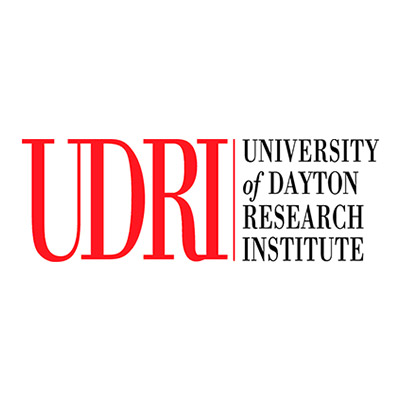


DART SLM powder cell at UDRI (left) and in-situ sensors installed on UDRI’s DART SLM (right).
Problem
Currently metal additive manufacturing (AM) is being utilized as an iterative trial-and-error printing process that requires time consuming post-inspection steps to inform each design/build iteration. In addition, components in aircraft and weapons systems operate under very demanding conditions, requiring stringent quality assurance procedures to detect and locate non-conformances that might compromise flight safety. Costly nondestructive evaluation (NDE) is required to identify these non-conformances. This project seeks to illuminate and enable a more focused NDE to reduce time/cost and eventually enable detection of data anomalies in-situ that can lead to identification of critical end part nonconformances.
Objective
The objective of this project is to reduce the time and associated costs of obtaining the first good metal AM part. By correlating in-situ data to ground truth NDE data, the project aims to identify regions of interest or “points of concern” for a targeted/streamlined NDE approach. The goal is to demonstrate how in-situ laser powder bed fusion (LPBF) sensors coupled with effective data management/correlation can enable machine learning algorithms to identify part regions and resolution needed for inspection.
Technical Approach
The University of Dayton Research Institute (UDRI) is leading the program team which includes Northrup Grumman Corporation (NGC), ZEISS, Open Additive, and Macy Consulting. UDRI’s DART selective laser melting (SLM) system with its open architecture 3D printing platform allows researchers to customize the printer’s use of materials and monitor printing progress using a variety of sophisticated sensors.
NGC is providing a representative design of an aluminum heat exchanger that has been modified for AM fabrication. UDRI is printing the NGC identified heat exchanger parts utilizing their DART SLM machines. ZEISS is performing multi-resolution X-ray computed tomography (CT) on each correlation build. Upon finding the non-conformances in post inspection, the CT data can be used to correlate end part nonconformances to in-process anomalies. The technology demonstration plans to showcase how costly post inspection time can be limited by utilizing in-situ data to determine points of concern for inspection.
Project Participants
Project Principal

Other Project Participants
- Northrop Grumman Corporation
- Zeiss
- Open Additive
- Macy Consulting
Public Participants
- U.S. Department of Defense
